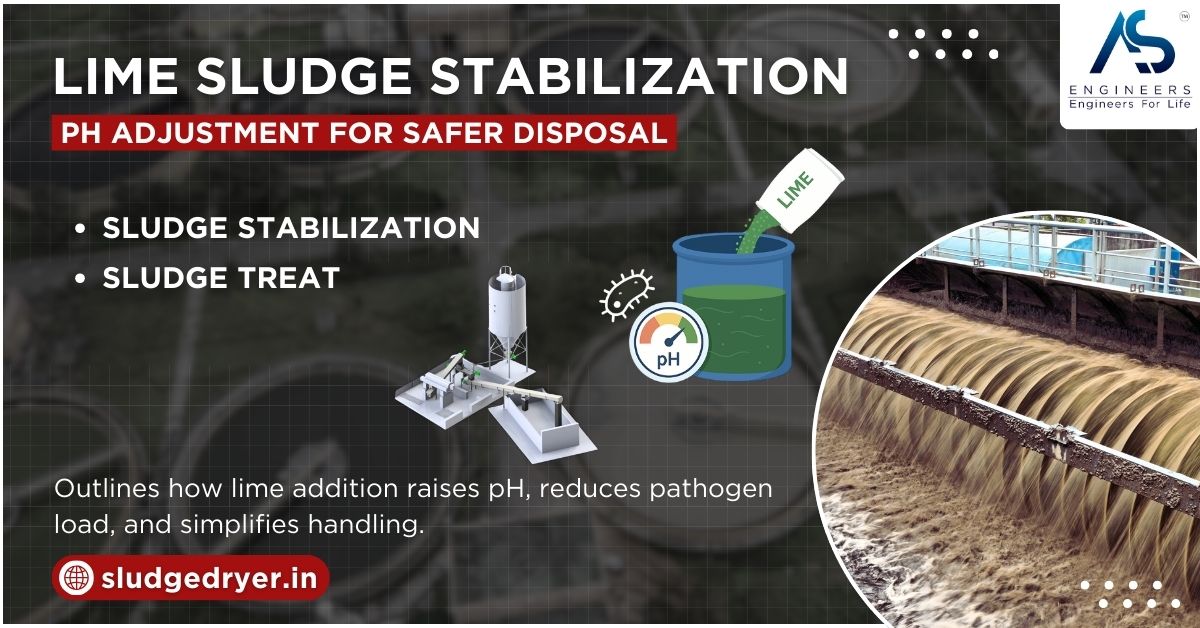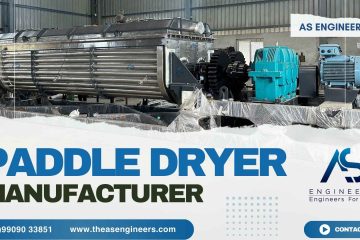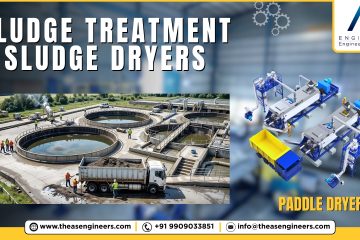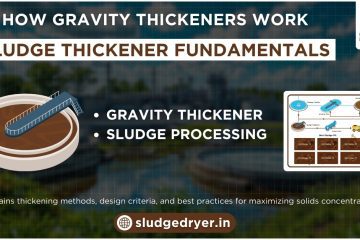Have you ever wondered what happens to all that byproduct created during water treatment or industrial processes? One common byproduct is lime sludge, an alkaline material generated whenever lime is used to treat water, stabilize waste, or adjust pH levels in manufacturing. This residual sludge can pose real handling and disposal challenges if not managed properly. Fortunately, with the right sludge stabilization techniques—particularly adding lime to regulate pH—this material can be rendered safer and more cost-effective to dispose of.
In this guide, you will learn how lime sludge works, why lime addition effectively reduces pathogens, and how you can optimize disposal procedures while lowering environmental risks.
Table of contents
- Understanding Lime Sludge and Its Importance
- Why pH Adjustment Is Critical
- Core Principles of Sludge Stabilization
- Key Benefits of Lime Sludge Treatment
- The Science Behind Lime Sludge Stabilization
- Detailed Steps to Lime Sludge Stabilization
- Common Equipment for Lime Sludge Stabilization
- Operational Best Practices
- Real-World Examples and Case Studies
- Environmental Regulations and Compliance
- Frequently Asked Questions (FAQ)
- Conclusion
- Further Reading and References
Understanding Lime Sludge and Its Importance
What Is Lime Sludge?
Lime sludge refers to the semi-solid residue left after lime has been used in various processes, most commonly in water and wastewater treatment. When facilities add lime to water systems, it raises the pH, prompting chemical reactions that precipitate out various impurities. Those impurities, along with excess lime, form a sludge that settles at the bottom. This sludge, high in calcium compounds, can also contain metals, organic particles, and other contaminants removed from the water.
Lime sludge also emerges from industrial manufacturing, especially in sectors that rely on alkaline processes. Paper mills, food-processing plants, and certain chemical manufacturers often generate an ongoing stream of lime-based byproducts. Although the specific characteristics of lime sludge differ by industry, most forms have a high pH and require careful handling.
Why Is It Important?
At first glance, lime sludge might look like a minor waste material. However, its management and disposal have significant cost, regulatory, and environmental implications. If you fail to stabilize lime sludge properly, it can present hazards like elevated pathogen levels (in cases where the sludge contains biological contaminants) or leach high pH water into surrounding soil and groundwater.
When stabilized the right way—often via additional lime or related compounds—this sludge transforms from a questionable byproduct into a more inert, safer-to-handle material. This reduces disposal fees, mitigates environmental impact, and ensures regulatory compliance. In short, effective sludge stabilization using lime supports a cleaner, more sustainable approach to waste management.
Why pH Adjustment Is Critical
Controlling Pathogens
One of the biggest reasons for adjusting pH in sludge treat processes is pathogen control. When the environment becomes highly alkaline (pH above 12), many bacterial and viral pathogens cannot survive. By boosting the pH with lime, you create conditions hostile to harmful organisms, thus lowering the risk of disease transmission.
Facilitating Chemical Reactions
pH plays a central role in countless chemical reactions. In lime sludge, a high pH triggers precipitation of metals and phosphate, which further aids in their removal or immobilization. It also helps break down certain organic components, making the material more stable and easier to dewater.
Meeting Regulatory Standards
Most regulations around sludge disposal revolve around standards for pathogens, heavy metals, and overall environmental impact. By carefully controlling pH, industries meet stringent guidelines for land application, landfill disposal, or reuse in other processes. Without effective pH control, you could face regulatory fines, community pushback, or extended liabilities.
Core Principles of Sludge Stabilization
Alkaline Stabilization
Alkaline stabilization is a broad term for treating sludge with alkaline agents, like lime, to raise the pH. In the context of lime sludge, we often speak about “alkaline addition,” which neutralizes acidic components, inactivates pathogens, and reduces offensive odors. By maintaining an elevated pH for a specified period, the sludge becomes biologically and chemically stable enough for safer disposal or reuse.
Dewatering
Once you raise the pH and reduce pathogens, you typically want to reduce the water content to cut down on transport and disposal costs. Techniques like centrifugation, belt presses, or drying beds are common. The less water you have in your stabilized sludge, the lower your volume and cost for final disposal.
Odor Control
Nobody wants to deal with foul-smelling waste. High-pH conditions suppress many of the microbial activities that produce odors (like hydrogen sulfide generation). Properly stabilized lime sludge is less likely to emanate the strong sulfurous or ammonia-based smells that plague poorly treated residuals.
Nutrient Management
In some cases, treated lime sludge can have beneficial agricultural uses due to its calcium and pH-balancing properties. However, agricultural application is highly regulated. You must ensure that the material meets pathogen and contaminant thresholds. If done correctly, the high pH and presence of essential nutrients can enrich soil quality.
Key Benefits of Lime Sludge Treatment
- Reduced Pathogen Levels
An elevated pH environment is inhospitable to most pathogens. Lime addition significantly lowers bacterial, viral, and protozoan concentrations. - Safer Handling
When sludge is stabilized, workers face fewer health risks from direct contact or inhalation of aerosols. This also lowers the chance of accidents tied to excessive odor or gas formation. - Cost Savings
Stabilized sludge often qualifies for less expensive disposal routes, like land application or lower-tier landfills. In many jurisdictions, non-stabilized sludge faces more costly disposal fees or stricter regulatory hurdles. - Odor Reduction
The high pH environment curtails the breakdown of volatile organic compounds responsible for noxious odors. This makes on-site operations more pleasant and reduces complaints. - Potential Reuse
Treated lime sludge might find secondary uses, such as soil amendment, land reclamation, or even raw material for construction products, depending on local regulations and sludge composition.
The Science Behind Lime Sludge Stabilization
Role of Calcium Hydroxide
When you add lime—often in the form of quicklime (calcium oxide) or hydrated lime (calcium hydroxide)—to sludge, it dissolves to form calcium and hydroxide ions. The free hydroxide ions boost the pH, creating an alkaline environment. This shift in pH precipitates metals and other dissolved materials, rendering them less soluble and less toxic.
Impact on Microbial Communities
In typical sludge treat processes, a variety of microbes thrive at near-neutral pH. But when the pH goes above 12, many microbial enzymes stop functioning. Pathogenic bacteria like E. coli, Salmonella, and some viruses cannot survive prolonged exposure to such high alkalinity. The net result is a significant pathogen kill-off, which is a primary objective in sludge stabilization.
Carbonation and pH Stability
Over time, lime-treated sludge may undergo carbonation if exposed to the air. Atmospheric CO2 dissolves into the sludge, forming carbonic acid and gradually lowering the pH. While this phenomenon can reduce pH slightly, the stabilized material often remains alkaline enough to stay safe for disposal. Some facilities purposely allow partial carbonation to reduce the corrosive potential of extremely high-pH sludge before final disposal.
Detailed Steps to Lime Sludge Stabilization
1. Sludge Characterization
Before you start any lime-based sludge stabilization, you need to know what you’re dealing with. Lab tests should assess:
- Moisture Content
- pH and Alkalinity
- Pathogen Indicators (e.g., fecal coliforms)
- Heavy Metals (lead, mercury, arsenic, etc.)
- Organic Composition
This baseline data helps you determine optimal lime dosage, mixing requirements, and final disposal routes.
2. Lime Selection
Two main lime products dominate the sludge stabilization process:
- Quicklime (Calcium Oxide)
Quicklime is highly reactive and exothermic when it contacts water. It provides a rapid pH boost but requires careful handling to manage heat generation and dust. - Hydrated Lime (Calcium Hydroxide)
Hydrated lime, or slaked lime, is less reactive than quicklime. It’s easier to handle but may require a slightly higher dosage or longer contact time.
Facilities are often chosen based on cost, safety protocols, and how quickly they need to achieve a target pH.
3. Dosage Calculations
Determining how much lime to add depends on sludge characteristics. Operators run jar tests, pilot studies, or rely on historical data to find the “lime demand,” which is the quantity needed to achieve and maintain the target pH—usually between 12 and 13. The correct dosage also accounts for reaction time. For pathogen kill, many regulations specify maintaining pH 12 or above for at least two hours.
4. Mixing Regimen
Proper mixing ensures that lime disperses uniformly throughout the sludge. Without good mixing, you’ll have pockets of under- or over-treated material. Mixers range from in-line static mixers for continuous flow systems to mechanical agitators in batch reactors. Thorough mixing also helps break down sludge flocs, promoting better chemical contact with pathogens and metals.
5. Retention Time
To achieve consistent pathogen reduction, the sludge must stay at the elevated pH for a set duration. Many guidelines recommend two hours or more at a pH of at least 12. This “contact time” is critical for complete microbial inactivation. Longer retention times can further improve stabilization, but they increase tank volume requirements and operating costs.
6. Dewatering or Thickening
After lime addition, the sludge may go through dewatering processes like:
- Belt Filter Presses
Sludge is sandwiched between moving belts, and pressure removes water. - Centrifuges
High-speed rotation separates solids from liquids. - Drying Beds
Sludge is spread in shallow layers to drain and evaporate.
Dewatering yields a more concentrated, cake-like material, lowering disposal volume. High pH can actually help certain dewatering processes because it promotes flocculation of particles.
7. Final Disposal or Reuse
Once stabilized and dewatered, lime sludge can take several paths:
- Landfill
Many landfills accept stabilized sludge, often at lower fees if it’s shown to be non-hazardous. - Land Application
If the sludge meets pathogen and contaminant criteria, it can serve as a soil amendment. The high lime content helps neutralize acidic soils. - Construction Material
In some regions, lime sludge can be repurposed into bricks or cement additives, though that depends heavily on chemical composition and market demand.
Common Equipment for Lime Sludge Stabilization
Lime Storage Silos
For large-scale operations, silos store bulk lime. These structures keep lime dry and free from contamination, typically featuring dust collection systems to reduce airborne particles. An integrated screw conveyor or feeder typically measures out the precise lime dosage.
Sludge Mixing Tanks
Mixing tanks are central to effective sludge stabilization. They can be designed as completely stirred reactors or horizontal flow basins with mechanical agitators. Some facilities opt for in-line mixing to save space, but thorough contact often benefits from tank-based setups.
pH Monitoring Systems
Real-time pH monitoring is critical. Inline pH sensors track the sludge’s alkalinity as lime is added. If readings dip below the target level, the system adjusts lime feed rates. Calibration and maintenance of these sensors are vital to consistent sludge treat performance.
Dewatering Units
After or during stabilization, you’ll likely pass the sludge through dewatering equipment. Centrifuges are popular in many high-throughput plants because they handle large volumes efficiently. Belt filter presses are a good choice for facilities needing moderate capacity and simpler operation.
Safety Gear
Lime dust is caustic, and quicklime generates heat when it contacts water. Operators should wear protective gear like goggles, gloves, and respirators. Eye wash stations, emergency showers, and well-marked exits are crucial in larger facilities.
Operational Best Practices
Regular Testing and Calibration
Consistent monitoring ensures that each batch of lime sludge meets the required pH and pathogen reduction targets. Calibrate pH sensors regularly and conduct periodic lab tests on the stabilized sludge to confirm pathogen kill rates. Over time, shifting raw sludge characteristics may necessitate dosage adjustments.
Implement an Alkalinity Buffer
Some facilities add supplemental buffers to maintain a stable pH during the reaction period. If the sludge has high acid demand, your pH could drop before the required contact time is met. By maintaining extra alkalinity, you keep pH stable, ensuring full pathogen inactivation.
Optimize Mixing Energy
Excessive mixing can break down flocs too much, making dewatering less efficient. Too little mixing creates uneven treatment. Fine-tuning mixer speed and retention time leads to consistent pH distribution and balanced floc formation.
Safety Checks
Lime-handling systems must include dust collection, proper ventilation, and safe storage to prevent moisture from contacting quicklime unexpectedly. Train staff on emergency protocols and ensure that personal protective equipment is always available and in good condition.
Incorporate a Contingency Plan
What happens if your primary lime supply is disrupted or if an unexpected spike in sludge volume occurs? A robust contingency plan includes alternate lime suppliers, standby mixing tanks, or emergency disposal routes. This foresight helps you avoid costly downtime and compliance issues.
Real-World Examples and Case Studies
Municipal Wastewater Plant Success
A mid-sized city in the Midwest faced persistent odor complaints and high disposal costs for its wastewater sludge. By investing in lime sludge stabilization, the facility raised pH levels above 12 for at least two hours. Within a month, community complaints dropped dramatically. Landfill operators categorized the treated residuals as “non-hazardous,” significantly reducing tipping fees. Over the next year, the city saved hundreds of thousands of dollars in disposal expenses alone.
Paper Mill Initiative
A paper mill that used lime in its pulping process produced a constant stream of lime-based sludge. Initially, the company dumped the sludge in a dedicated lagoon, but rising environmental concerns prompted a shift to active sludge stabilization. The mill installed a small-scale lime addition system, which turned the material into a more uniform, higher solids cake. Local regulators approved the stabilized sludge for farmland application under controlled conditions. The mill found an additional revenue stream by selling the stabilized product to local farmers needing soil pH correction.
Industrial Food Processing
An industrial-scale food processing facility generated a large amount of sludge with high moisture and moderate organic content. By implementing a hydrated lime feed system, operators pushed the pH to above 12, killing pathogens. A belt filter press further reduced water content, making the final material safer and easier to transport. This approach met stringent local and federal guidelines, allowed partial reuse of water within the plant, and minimized odor in the surrounding community.
Environmental Regulations and Compliance
EPA Guidelines
In many regions, the Environmental Protection Agency (or its equivalent) outlines specific standards for sludge stabilization, including pathogen reduction goals and vector attraction reduction requirements. Lime addition often meets the criteria for Class B biosolids if you maintain a pH above 12 for at least two hours. Some facilities strive for Class A, which typically demands more stringent pathogen standards.
Landfill Requirements
If you choose landfill disposal, the site operator will require documentation of the sludge’s characteristics, such as pH and leachable contaminants. Some landfills impose surcharges on untreated sludge because of potential odor or leachate issues. Proving that the sludge is stabilized can avoid such fees.
Record-Keeping
Regulations often mandate detailed record-keeping for sludge treat processes. This might include pH logs, sludge volume, dosage rates, sampling results, and disposal manifests. These records demonstrate compliance and can protect you in case of any regulatory audits or questions.
Future Trends
Environmental agencies continue to tighten rules around land application and disposal. Innovations like advanced alkaline stabilization or combining lime sludge with other byproducts are emerging. Keeping abreast of new techniques and proposed regulations can future-proof your operations and possibly open new reuse opportunities.
Frequently Asked Questions (FAQ)
1. What is lime sludge used for after stabilization?
Lime sludge, once stabilized and dewatered, may go to landfills, farmland application, or even become a raw material in construction. Each option depends on meeting regulatory standards and passing appropriate chemical and biological tests.
2. How do I determine the right amount of lime to add?
The “lime demand” depends on the sludge’s initial pH, composition, and buffer capacity. Most operations run small-scale tests or rely on past experience to find the dosage that keeps pH above 12 long enough to reduce pathogens.
3. Does lime sludge stabilization eliminate odors completely?
It greatly reduces odors by inhibiting microbial processes that produce volatile compounds. While you may still detect a mild chalky or earthy smell, the strong sulfurous or sewage-like odors usually vanish.
4. Can lime sludge be hazardous?
Unstabilized sludge may contain pathogens, metals, or chemicals that pose risks. Once treated with lime, it’s usually safer. However, “hazardous” status depends on individual site regulations and the presence of specific contaminants. Laboratory analysis is essential to confirm.
5. Can lime sludge stabilization save money for my facility?
Yes. Stabilized sludge qualifies for more affordable disposal routes and often produces fewer odor and pathogen-related issues. By adhering to regulatory guidelines, many facilities save on permit fees, potential fines, and community complaints.
Conclusion
Lime sludge stabilization offers a direct path toward safer, more cost-effective sludge management. By boosting pH levels above 12, you halt pathogen growth, reduce odors, and simplify the entire disposal process. Whether you run a municipal wastewater facility, an industrial manufacturer, or a food-processing plant, lime-based sludge treat approaches can help you meet rigorous environmental regulations and lower your operational expenses. When you combine the right dosage, robust mixing, sufficient contact time, and diligent monitoring, the resulting material is easier to handle, less odorous, and far less risky to store or transport. Ready to explore how lime sludge stabilization could transform your facility? Share your thoughts below, subscribe for more insights, and check out related guides on advanced wastewater treatment methods.
Further Reading and References
- United States Environmental Protection Agency (EPA): www.epa.gov
- Centers for Disease Control and Prevention (CDC): www.cdc.gov
- Water Environment Federation: www.wef.org
- European Commission Environmental Directives: environment.ec.europa.eu
- National Lime Association: www.lime.org




